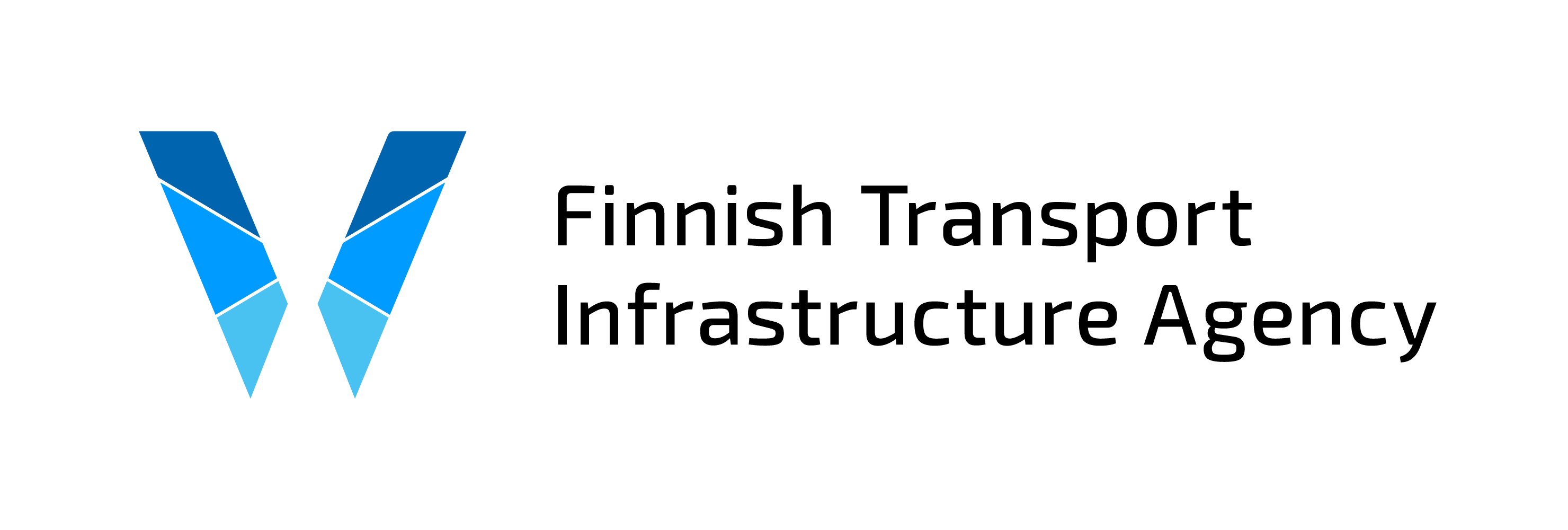The Finnish Transport Infrastructure Agency's vision of transport infrastructure data management for 2030 is to build a digital model of the transport network to support transport infrastructure management in the best possible way and a digital twin of the most important sites. In addition to up-to-date infrastructure information, it will include condition and forecast models for routes.
Work on the digital twin will be carried out throughout the 2020s on several different fronts. For example, a digital model of the transport infrastructure network is being constructed as we speak as more high-quality information on infrastructure is transferred to systems. However, this work requires patience.
"The journey towards a digital twin of the transport network is by no means a straightforward one, but rather contains several parallel routes. Everything we do to promote the digitalisation of infrastructure information management will be improved piece by piece, which means that we will gradually move towards the goal," says Matti Pesu, Development Manager for Transport Infrastructure Information at the Finnish Transport Infrastructure Agency.
The foundations of the 2030 vision have been created in recent years, and our newsletter already described the first steps in spring 2023. Recent foundations also include the agency's new centre of expertise in artificial intelligence and robotics and the development of analytics, which support the development of the digital twin.
Selected themes lead towards the goal
In brief, all development in information management promotes the journey towards a digital twin. However, the Finnish Transport Infrastructure Agency has separated six special themes the implementation of which will see processes on different fronts move in the same direction and towards the target.
Data flow: A recognised, documented, smooth and automated data flow is one of the basic elements of a digital twin.
Data quality management: Data quality is emphasised in the utilisation of a digital twin, as it passes through winding and complex analytics in in. In other words, analytics and especially artificial intelligence should be fed with high-quality data.
Interoperability: The digital twin's requirement for data interoperability is high, as the aim is to achieve a very high degree of automation in data processing. Interoperability is implemented in practice, for example, by harmonising information models and concepts and by defining unique identifiers.
Forecasts: It is important to prepare forecast models, digitalise them and develop technical solutions towards their more common use so that the use of forecasts can expand to cover more use cases.
Information Security: The study of advanced security solutions is important while planning use cases for a digital twin. The digital twin will facilitate new ways of combining data using analytics and artificial intelligence, which sets requirements for information security.
Utilisation of information: A digital twin can be utilised through various interfaces, as it is not one specific information system or user interface. At its simplest, it can be a written message or an excel table, at its most complex a metaverse offering a 3D landscape.
More efficient utilisation of existing information
When data production and management processes are developed, new ways of utilising data from different channels are created even before the actual digital twin is created. For example, the installation of sensors for railway turnouts and crossings provides up-to-date information on the condition of the most critical turnouts in the railway network. The information collected with the sensors can be used to proactively target the required maintenance measures, thus avoiding traffic impacts caused by turnout failures.
"It is worth remembering that the digital twin is not a new information system created alongside a previous one, but it comprises the more efficient utilisation of existing information using new methods - a kind of version 2.0," says Pesu.
The Finnish Transport Infrastructure Agency the only operator in Finland let alone the world, working to develop a digital twin. For example, the administrative branch of the Ministry of Transport and Communications has already envisioned a digital twin covering the entire transport system.
"Of course, we are developing a digital twin primarily for our own infrastructure management needs, but the needs of other actors must also be taken into account. Cooperation is important in this respect, too," Pesu emphasises.
